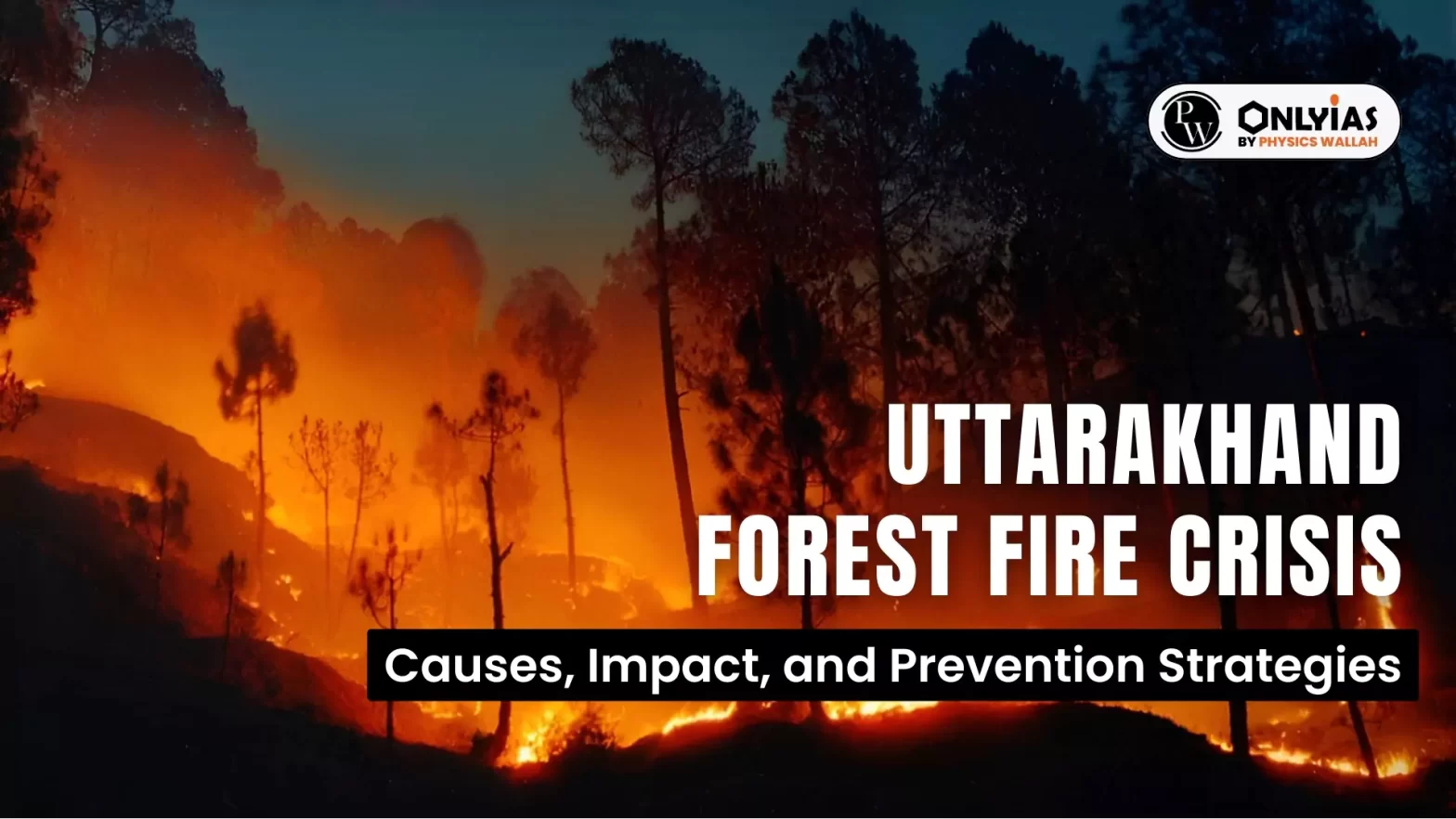Context
Recently, a massive fire spread through the forests near Nainital in Uttarakhand which lead to the deployment of Indian Air Force personnel.
Background of Uttarakhand Forest Fire
- Assessment of Forest fires: The Nainital, Haldwani and Ramnagar forest divisions were worst affected.
- Role of Bambi Buckets: In some regions, the fires were doused with the help of a Bambi bucket, used to pour large amounts of water on the flames in relatively quick intervals.
Enroll now for UPSC Online Course
Causes of Uttarakhand Forest Fire
- Man-Made Factors: Most fires are believed to be man-made, due to changes in agriculture and unchecked land-use patterns.
- Causes of Uttarakhand Wildfires: The forest department has previously cited four causes of wildfires in Uttarakhand – deliberate fires by locals, carelessness, farming-related activities and natural reasons.
How Frequent are Forest Fires in India?
- Forest Fires in India: The Forest Survey of India (FSI) website states that nearly 36 per cent of India’s forests are prone to frequent fires.
- Forest Fires Season: The forest fire season in India lasts between November to June.
- Higher fire incidents are reported in March, April and May due to ample availability of dry biomass following the end of winter and amid the prevailing summer season.
- Factors Influencing Forest Fires: Factors like temperatures, precipitation, vegetation, and moisture contribute to the scale and frequency of these fires.
- According to experts, three factors cause the spread of forest fires — fuel load, oxygen and temperature. Dry leaves are fuel for forest fires.
- Forest Fire Severity: Severe fires occur in many forest types particularly dry deciduous forest, while evergreen, semi-evergreen and montane temperate forests are comparatively less prone.
- Nearly 4% of the country’s forest cover is extremely prone to fire, whereas 6% of forest cover is found to be very highly fire prone (ISFR 2019).
- Forest Fire Hotspots: An FSI analysis in ISFR 2021 also found that states in northeastern India showed the highest tendency for forest fires.
-
- Parts of western Maharashtra, southern Chhattisgarh, central Odisha and regions in Andhra Pradesh, Telangana and Karnataka also showed patches of extremely and very highly fire-prone zones.
Legal Consequences:
- Notably, setting a forest on fire is a punishable offence under the Indian Penal Code.
- A forest official said several cases have been lodged but the accused remain unidentified in most such cases.
|
Way Forward to Prevent Forest Fires in India
Forest Fire Prevention and Control: The Ministry of Environment, Forest and Climate Change (MoEFCC) lists the following methods to prevent and control a forest fire:
- Construction of watch towers for early detection.
- Deployment of fire watchers.
- Involvement of local communities.
- Creation and maintenance of fire lines.
- NDMA Guidelines: According to the National Disaster Management Authority (NDMA) website, two types of fire lines are in practice. Kachha or covered fire lines and Pucca or open fire lines.
- In Kaccha fire lines, the undergrowth and shrubs are removed while trees are retained to decrease the fuel load.
- The Pucca fire lines are clear felled areas separating a forest/compartment/block from another to control the spread of potential fires.
- Satellite Technology in Enhancing Fire Prevention: Satellite based remote sensing technology and GIS tools have been effective in better prevention and management of fires through creation of early warning for fire prone areas, monitoring fires on real time basis and estimation of burnt scars.
Enroll now for UPSC Online Classes
Conclusion
Adopting a comprehensive approach to forest fire management, encompassing prevention, mitigation, and control, can yield improved outcomes, conserving natural resources and reducing human and property losses.
Also Read: Forest Rights Act 2006 And Rights Of Forest Dwellers
![]() 29 Apr 2024
29 Apr 2024

